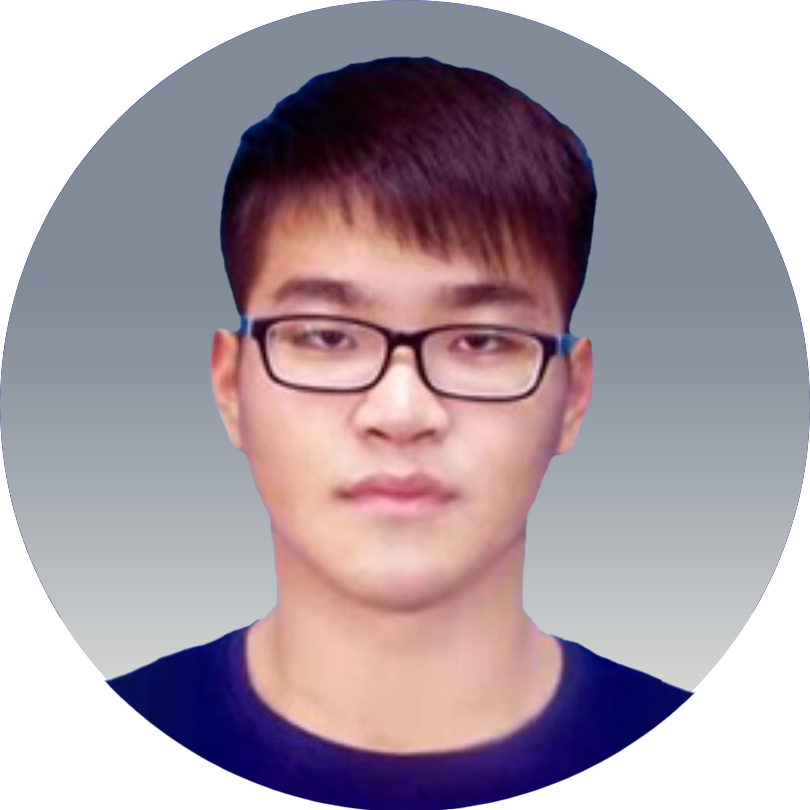Special Sessions
Ⅰ: Evolutionary Learning and Transfer Optimization for Intelligent Robotic Systems
| Chair | Co-Chairs | |||
 |
|  | ||
Songbai Liu Shenzhen University, China | Qiuzhen Lin Shenzhen University, China | Kay Chen Tan The Hong Kong Polytechnic University, China | ||
Keywords: Evolutionary Transfer Optimization, Learnable Evolutionary Algorithm, Complex Optimization Problems, Data-Driven Optimization, Adaptive Robotic Systems, Autonomous Intelligent Systems
Special Session Information:
Intelligent robotic systems are inherently plagued by a spectrum of complex optimization problems. These include multi-objective motion planning balancing energy consumption, speed, and stability; expensive tuning of manipulator control parameters relying on physical simulations or real-world experiments; dynamic path planning adapting to changing environments or task goals in unstructured settings; multi-task learning that requires acquiring multiple related skills with knowledge sharing; and large-scale policy search in high-dimensional spaces of sensorimotor control. The complexity of these problems poses significant challenges to the computational efficiency, solution quality, and generalization capability of traditional optimization algorithms.
This special session focuses on leveraging evolutionary transfer optimization and learning-assisted evolutionary algorithms to address these challenges. We encourage research on transfer mechanisms that utilize prior knowledge, simulation data, or cross-task similarity to accelerate the optimization process; learning paradigms that employ meta-learning, surrogate models, and neural networks to guide the search direction and reduce evaluation cost; and the development of intelligent evolutionary algorithms capable of adapting to dynamic environments and automatically decomposing complex tasks. We invite high-quality contributions in algorithm design, theoretical analysis, and validation on real-world robotic platforms, aiming to collectively advance computational paradigms for solving core optimization problems in robotics.
Topics of interest include but are not limited to:
Development and analysis of new evolutionary transfer optimization algorithms
The development and analysis of new data-driven and learning-assisted evolutionary algorithms
Fast Online Evolution and Meta-Learning Adaptation Mechanisms for Dynamic Environments
Large-Scale Evolutionary Algorithms and Their Distributed Computing Frameworks for High-Dimensional State-Action Space Optimization
Knowledge Representation, Transfer, and Evolution in Robotic Multi-task and Lifelong Learning
Applications of evolutionary algorithms in machine learning and deep learning
Real-world optimization problems solved using evolutionary algorithms
Theoretical studies on the convergence and performance of evolutionary algorithms
Evolutionary optimization in robotics and autonomous systems
Ⅱ: Compute-in-Memory for Embodied AI
| Chair | Co-Chair | |||
 |  | |||
An Guo City University of Hong Kong, China | Jintao Li University of Electronic Science and Technology of China, China | |||
Keywords: Compute-in-Memory (CIM), AI accelerator, Embodied AI, Neural Processing Unit (NPU), CIM Electronic Design Automation (EDA)
Special Session Information:
This session targets the perception-decision-control loop of embodied intelligence, focusing on key challenges and recent advances of Compute-in-Memory (CIM) for edge agents.
Topics of interest include but are not limited to:
CIM Macro
CIM-based accelerator
CIM-based algorithm-circuit-device co-design
FP/INT quantization for CIM
CIM system operator mapping
CIM system prototypes and benchmarking
CIM architecture design space exploration
Ⅲ: Unmanned Systems and Artificial Intelligence
Chair | ||||
 | ||||
Xiaoru Song Xi'an Technological University, China | ||||
Keywords: Unmanned Aerial Vehicles, Unmanned Ground Vehicles, Underwater Unmanned Systems, Artificial Intelligence, Machine Learning, Deep Learning
Special Session Information:
The combination of artificial intelligence and unmanned systems is an important trend in the current development of science and technology, involving applications in many fields, including unmanned vehicles, drones, robots and so on. The application of artificial intelligence has made unmanned systems more intelligent and autonomous, driving changes in various industries. With the continuous development of technology, there will be more innovative applications in the future, further improving the capability and efficiency of unmanned systems.
Topics of interest include but are not limited to:
Intelligent perception and understanding
Decision and path planning
Autonomous unmanned system control
Multi-agent system
Man-machine collaboration
Ⅳ: Swarm Intelligence Algorithms and Their Applications
| Chair | ||||
| ||||
Kaiwen Li National University of Defense Technology, China | ||||
| Co-Chairs | ||||
 |  |  | ||
Wenhua Li National University of Defense Technology, China | Shuijia Li National University of Defense Technology, China | Rui Wang National University of Defense Technology, China | ||
Keywords: Swarm Intelligence, Optimization Algorithms, Machine Learning Applications, Metaheuristics, Artificial Intelligence, Real-World Applications
Special Session Information:
Swarm intelligence, a subfield of artificial intelligence, takes inspiration from the collective behavior of natural systems such as ant colonies, bird flocks, and fish schools. Algorithms like Particle Swarm Optimization (PSO), Ant Colony Optimization (ACO), and Artificial Bee Colony (ABC) have proven to be powerful tools for solving complex optimization problems in a wide range of fields, including engineering, robotics, data science, and smart systems. This special session aims to explore the latest advancements in swarm intelligence algorithms, their theoretical foundations, and their applications in solving real-world challenges. We invite submissions focusing on innovative algorithm design, hybrid approaches, and interdisciplinary applications that demonstrate the potential of swarm intelligence in addressing modern technological and societal issues.
Topics of interest include but are not limited to:
Development and analysis of new swarm intelligence algorithms
Hybrid swarm intelligence methods and their applications
Applications of swarm intelligence in machine learning and deep learning
Swarm intelligence in robotics, autonomous systems, and IoT
Real-world optimization problems solved using swarm intelligence
Theoretical studies on the convergence and performance of swarm intelligence algorithms
Comparisons between swarm intelligence and other optimization techniques
Novel applications of swarm intelligence in industries like healthcare, transportation, and finance
Ⅴ: Connected Robotic Intelligence in Heterogeneous Systems
| Chair | ||||
 | ||||
| Feng Wang Singapore University of Technology and Design, Singapore | ||||
| Co-Chairs | ||||
 Yao Sun University of Glasgow, UK |
Yijing Liu University of Electronic Science and Technology of China, China |
Ruize Cheng University of Glasgow, UK | ||
Keywords: Distributed Robotic Control, Semantic Communications, Heterogeneous Networking, Multi-Agent Collaboration, Task Orchestration
Special Session Information:
Modern robotic systems are rapidly evolving from isolated entities into networked agents capable of intelligent perception, coordination, and action over diverse and distributed infrastructures. These infrastructures often span heterogeneous systems like terrestrial, aerial, and space platforms, posing new challenges for real-time communication, adaptive control, and service orchestration in robotic applications.
This special session aims to explore how intelligent connectivity control mechanisms can empower robust robotic operations in mobile and heterogeneous environments. Key enablers include semantic communication, AI-native networking, and distributed decision-making across agents.
We invite contributions on cross-layer system design, network-aware control, and robotic task orchestration under heterogeneous connectivity. This session aims to bridge the fields of robotics, wireless communication, and AI for advancing connected, collaborative robotic intelligence.
Topics of interest include but are not limited to:
AI-enhanced robotic control and communication
Distributed robotic coordination over heterogeneous networks
Task offloading and service migration in connected robotic systems
Semantic communication for robots
Edge intelligence for mobile and aerial robots
Unified frameworks for robotic planning and wireless connectivity
Cross-domain connectivity management in mobile robotic system
Communication-efficient robotic control
Ⅵ: Mechanism and Actuator Innovations for Safe Human–Robot Collaboration
| Chair | Co-Chair | |||
 |  | |||
Nguyen Vu Linh VinUniversity, Vietnam | Hongnian Yu Edinburgh Napier University, UK | |||
Keywords: Compliant Mechanisms, Variable-stiffness Actuators, Spring-design, Physical Human-robot Interaction, Energy Efficiency, Adaptive Actuation
Special Session Information:
The growing integration of robots into human-centered environments, such as healthcare, rehabilitation, and collaborative manufacturing, demands systems that are inherently safe, adaptive, and physically intelligent. While much progress has been made in sensing and AI-based control, the foundation of safe human–robot collaboration lies in mechanical and actuation design.
This special session focuses on innovative mechanisms and actuator technologies that enable robots to physically interact with humans in a natural, secure, and energy-efficient manner. Emphasizing the synergy between mechanical design, control, and human factors, the session aims to showcase multidisciplinary research in compliant actuation, variable-stiffness mechanisms, constant-force systems, and human-centered co-design. By highlighting fundamental advances and real-world implementations, this session seeks to advance the next generation of collaborative and assistive robotic systems.
Topics of interest include but are not limited to:
Variable-stiffness and variable-damping actuators
Compliant and soft robotic joints and grippers
Constant-force and quasi-zero-stiffness mechanisms
Gravity-compensated and energy-efficient robotic designs
Series elastic and tendon-driven actuation systems
Human-centered and ergonomic design
Wearable robots and exoskeletons
Co-design and optimization for collaborative robots
Applications in rehabilitation, service, and industrial collaborative robotics
Ⅶ: Intelligent Robotic Technologies for Empowering Future Agriculture
| Chair | ||||
 | ||||
| Zhongzhi Han Qingdao Agricultural University, China | ||||
| Co-Chairs | ||||
Haidong You Qingdao Agricultural University, China |
Lin Li Qingdao Agricultural University, China | |||
Keywords: Agricultural Robotics, Intelligent Perception and Decision-Making, Autonomous Unmanned Systems, Multi-Robot Collaboration, Precision Agriculture, Agricultural Automation
Special Session Information:
Intelligent robots face a unique set of complex challenges in perception, decision-making, and execution within agricultural environments. These include achieving robust visual perception and navigation in unstructured and dynamically changing field conditions; performing dexterous manipulation for randomly distributed crops with diverse morphologies, while balancing efficiency and success rates; coordinating multi-platform systems (e.g., UAVs and UGVs) for collaborative task allocation and formation control under field uncertainties; and enabling end-to-end intelligent decision-making from perceptual data to operational policies for large-scale and diversified farming scenarios. These challenges impose stringent requirements on the environmental adaptability, task intelligence, and operational economy of robotic systems.
This session aims to concentrate on employing advanced intelligent robotic technologies to address the aforementioned challenges. We encourage submissions on cutting-edge methods that enhance the environmental interaction capabilities of agricultural robots, including robust decision-making frameworks that fuse multi-modal perception, AI large-scale models, and prior knowledge; the development of lifelong learning and meta-learning control strategies that adapt to crop growth cycles and dynamic field conditions; and the construction of integrated robotic systems incorporating specialized mechanism design, intelligent actuation, and low-power computing. We cordially invite high-quality research contributions in mechanism innovation, algorithm design, system integration, and field application validation, collectively advancing robotic technologies that can tangibly empower the future of agriculture.
Topics of interest include but are not limited to:
Robust Perception and Navigation in Agricultural Unstructured Environments
Crop Recognition and Dexterous Manipulation for Autonomous Operations
Multi-Platform Collaboration and Swarm Control for Agricultural Robots
Data-Driven and AI Large Model-Empowered Decision-Making for Agricultural Robots
Specialized Mechanism Design and Intelligent Actuation for Field Operations
Continuous Learning and Adaptive Control for Agricultural Robots
Integration, Verification, and Economic Analysis of Agricultural Robot Systems
Paradigms and Interfaces for Human-Robot Collaboration in Complex Agricultural Tasks
Ⅷ: AI and Edge Intelligence for Gait Analysis and Rehabilitation Robotics
(Smart Sensing and Control in Gait and Robotic Rehabilitation)
| Chair | Co-Chair | |||
 |  | |||
| Yan Wang Zhongyuan University of Technology, China | Hongnian Yu Edinburgh Napier University, UK | |||
Keywords: Gait Analysis, Robotic Rehabilitation, Multi-Source Data Fusion, Edge Intelligence, Wearable Sensing, Human–Robot Interaction
Special Session Information:
This session focuses on recent advances in AI-enabled gait analysis and rehabilitation robotics, with particular emphasis on edge-intelligent multi-source data fusion. The rapid development of wearable sensors, IoT platforms, and AI-driven biomechanical analytics is enabling the integration of diverse data stream—including motion capture, inertial sensing, electromyography signals, and plantar pressure measurements— to achieve more accurate movement characterization and adaptive rehabilitation strategies.
The session will explore recent advances in data fusion algorithms, multimodal sensing frameworks, and edge-deployable intelligent systems designed to enable real-time feedback, personalized rehabilitation, and efficient deployment on resource-constrained hardware. Through discussions on emerging technologies and case studies, this session aims to foster interdisciplinary collaboration across biomechanics, robotics, machine learning, and healthcare engineering.
Topics of interest include but are not limited to:
Multi-source sensing and data fusion for gait analysis
Robotic and wearable rehabilitation systems
Edge intelligence and on-device AI deployment
Human-robot interaction and adaptive control
Federated and privacy-preserving learning for healthcare systems
Intelligent sensing technologies for motion capture
Cloud–edge collaboration for real-time rehabilitation feedback
Deep learning and biomechanical modeling in gait assessment
Digital twin and human-in-the-loop rehabilitation frameworks
Evaluation and benchmarking of gait and rehabilitation datasets
Ⅸ: Flexible Wearable Exoskeleton Technologies and Applications
| Chair | Co-Chair | |||
 |  | |||
Guohui Wang Shanghai University, China | Dongdong Chen Shanghai University, China | |||
Keywords: Exoskeleton, Soft Robotics, Rehabilitation Assistance, Human-Robot Interaction, Wearable Devices
Special Session Information:
This special session focuses on the latest research advances and applications in flexible wearable exoskeleton technologies. As a frontier in human-robot interaction and intelligent rehabilitation, exoskeleton technology demonstrates tremendous potential in medical rehabilitation, elderly assistance, and industrial support scenarios. This session particularly emphasizes key technologies including variable stiffness actuation, soft material and structural design, biomechanical optimization, and intelligent control algorithms, as well as innovative achievements in practical applications such as tremor suppression, fall protection, and motion enhancement. We welcome submissions from researchers with multidisciplinary backgrounds in robotics, biomedical engineering, materials science, and control engineering to jointly advance the development and clinical translation of wearable exoskeleton technologies.
Topics of interest include but are not limited to:
Variable Stiffness Actuation Mechanism Design and Optimization
Soft Exoskeleton Materials and Structural Innovation
Wrist, Hand, and Lower Limb Exoskeleton Systems
Tremor Suppression and Motion Assistance Technologies
Exoskeleton Biomechanical Modeling and Simulation
Intelligent Control and Human-Robot Collaboration Strategies
Fall Protection and Balance Enhancement Systems
Rehabilitation Training and Assessment Technologies
Ⅹ: Advanced Actuation and Sensing Technologies for Next-Generation Robotics
| Chair | Co-Chair | |||
 |  | |||
Guangwei Zhang Sun Yat-sen University, China | Jianshe Feng Sun Yat-sen University, China | |||
Keywords: Flexible Actuators, Joint Motors, Intelligent Sensing, Bio-inspired Robotics, Human-Machine Collaboration
Special Session Information:
Robotic performance in complex and unstructured environments is fundamentally limited by the capabilities of actuation and sensing. Conventional rigid actuators and constrained sensing modules often hinder adaptability, compliance, and energy efficiency. By contrast, emerging applications such as agile manufacturing, search-and-rescue operations, and human–machine collaboration demand transformative innovations in both actuation design and perceptual intelligence.
This special session seeks to address the critical challenges of actuation and sensing by showcasing recent breakthroughs in advanced materials, mechanics, sensing technologies, and embedded intelligence. Particular emphasis will be placed on the co-development of high-performance soft and flexible actuators, precision joint modules, intelligent sensing systems, and model-based control frameworks. Together, these advances aim to enable dynamic compliance, optimized force density, enhanced environmental perception, and biomimetic motion generation.
We especially welcome contributions that bridge theoretical progress in multi-physics modeling with practical hardware implementation and integrated sensing–control strategies. Researchers working at the intersection of actuation, perception, and intelligent control are invited to submit their latest findings to this session.
Topics of interest include but are not limited to:
Flexible drive systems
High-torque density joint motors
Nonlinear dynamic modeling and real-time simulation
Learning-based strategies for actuator and sensing adaptation
Tendon- and muscle-inspired biomimetic actuation
Power-efficient hybrid drive and sensing topologies
Thermal–force coupling analysis in compact actuators
Fail-safe mechanisms for reliable actuation and sensing systems
Field applications in legged, aerial, and underwater robotics
Ⅺ: Biomimetic Robot Technologies and Applications
| Chair | Co-Chair | |||
 |  | |||
Chongkun Xia Sun Yat-sen University, China | Jianing Wu Sun Yat-sen University, China | |||
Keywords: Biomimetic robot, Bionic structure, Biomaterials, Function Bionics, Social bionics, Micro-bionic robot
Special Session Information:
This special session focuses on the latest research and progress in biomimetic robot technologies and applications in recent years. Biomimetic robots are one of the current research hotspots in the field of robotics. With the increasing depth and improvement of scientists' understanding of biological structures and functions, biomimetic robots have evolved from traditional purely mechanical to intelligent, programmable, miniaturized, multifunctional, and swarm oriented directions, which is of great significance for promoting the development of robotics. This special session aims to show more key technologies about biomimetic robots and their derived biomimetic structures, biomaterials, function bionics, social bionics, micro-bionic robot biomimetic materials, as well as innovative achievements in practical applications such as industrial production and manufacturing, home services, medical operations, special environmental operations, etc. Moreover, this special session also expects to receive more submissions from humanoid robots, humanoid dexterous hands, bionic legged robots, and so on. This special session aims to explore the technological development path of future bionic robots by showing the latest and cutting-edge contributions.
Topics of interest include but are not limited to:
Basic theory of biomimetic robots
Design, modeling, and control of biomimetic mechanisms
Biomimetic materials and their applications in robots
Biomimetic perception technology and its applications
Swarm biomimetic robots
Micro-bionic robots
Modeling and control of humanoid Robots
Dexterous hand design, modeling and control
Other biomimetic related robot technologies and applications
Ⅻ: Intelligent Aerial Robotics for the Low-Altitude Economy
| Chair | Co-Chair | |||
 |  | |||
Haoyang Yang Hong Kong Polytechnic University, China | Wen-Hua CHEN Hong Kong Polytechnic University, China | |||
Keywords: Low-Altitude Economy(LAE), Intelligent Aerial Robotics, Unmanned Aerial Vehicles (UAVs), Intelligent Perception and Control
Special Session Information:
The rapid growth of the Low Altitude Economy (LAE) is creating new opportunities for robotics, artificial intelligence, and automation, while also imposing stringent requirements on their deployment in real-world low-altitude environments. Such environments are characterized by dense air traffic, dynamic obstacles, communication constraints, strict safety requirements, and regulatory compliance, which pose significant challenges for perception, decision-making, and control in robotic systems. This special session focuses on robotic and unmanned systems for the Low Altitude Economy, with an emphasis on system design, core algorithms, and practical implementations in field scenarios. Topics include environment perception, intelligent control, system integration, and representative applications. By bringing together recent advances from both academia and industry, this special issue aims to advance fundamental research and technologies for LAE and to foster interdisciplinary collaboration and innovation in the field.
Topics of interest include but are not limited to:
Design and implementation of robotic systems for LAE
Safety and reliability of low-altitude aerial robotic systems
Advanced artificial intelligence methods for LAE applications
Guidance, navigation, and control of UAVs
Perception and environment modeling for low-altitude urban environments
Applications of UAVs in logistics, transportation, agriculture, infrastructure inspection, and emergency response
Airspace management and traffic control for low altitude operations
Multi-UAV cooperation and swarm task allocation
XIII: Frontier Technologies and Applications in Robot Cross-Domain Collaboration and Intelligent Evolution
| Chair | Co-Chairs | |||
|  |  | ||
Jianxiao Zou Shenzhen Institute for Advanced Study, UESTC, China | Lei Jia Shenzhen Institute for Advanced Study, UESTC, China | Jiyong Tan Shenzhen Institute for Advanced Study, UESTC, China | ||
Keywords: Autonomous robots, cross-domain collaboration, cloud-edge-device coordination, digital twins, heterogeneous computing power, evolutionary optimization
Special Session Information:
As autonomous robots find deeper application in national strategic fields such as smart manufacturing, emergency safety, and energy security, their core challenges have shifted from single-performance enhancements to system-level breakthroughs in cross-domain collaboration and intelligent evolution. Autonomous robot systems must achieve deep synergy in communication, control, and computation within complex dynamic environments while possessing capabilities for continuous evolution and transfer optimization.
This special session focuses on cutting-edge technologies for cross-domain coordination and intelligent evolution in autonomous robots. It emphasizes exploring how to deeply integrate core capabilities—such as robust coordination, adaptive regulation, and distributed intelligence—with emerging paradigms like evolutionary learning, digital twins, and heterogeneous computing power. This integration aims to propel autonomous robots from single-machine intelligence to swarm intelligence, and from fixed capabilities to continuous evolution.
Topics of interest include but are not limited to:
Perception-Planning-Control Real-Time Closed-Loop Coordination
Knowledge Representation and Evolutionary Transfer in Multi-Task and Lifelong Learning
Integrated Joint Optimization of Communication-Control-Computing
Digital Twin-Driven Simulation-to-Reality Transfer and Evolution
Dynamic Scheduling of Heterogeneous Computing Resources for Robot Swarms
Collaborative Intelligent Decision-Making and Rapid Inference Across Cloud-Edge-Device
Collaborative Perception and Regulation of Unmanned Systems in Smart Cities
Cooperative Autonomous Robot Clusters in Industrial Manufacturing
Intelligent Inspection and Maintenance of Energy and Transportation Infrastructure







